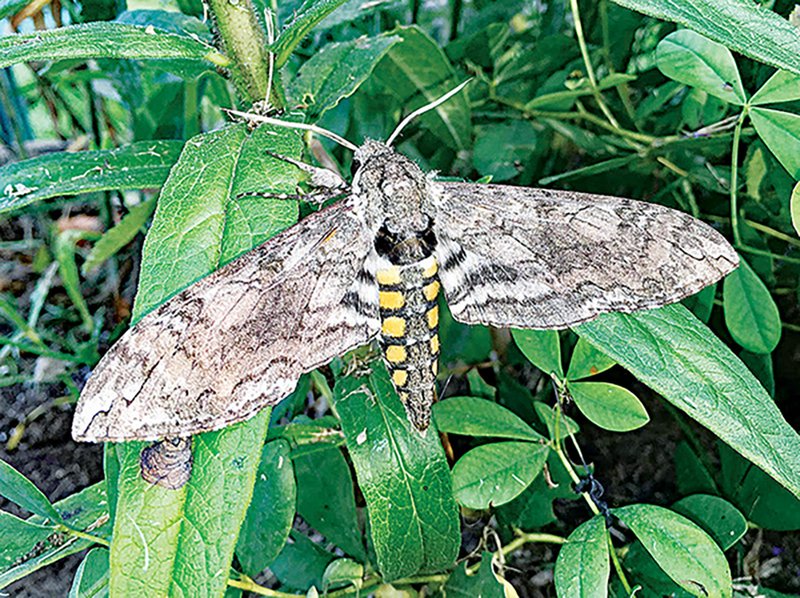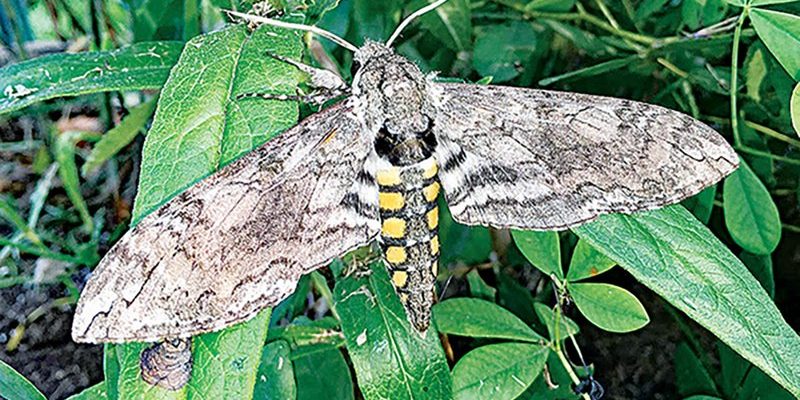
Imagine this—you’ve got a hornworm that’s been feasting on your plants. You might think it’s just a hungry little creature, but it’s so much more. These hornworms have a secret life you might not even realize. They go through an incredible metamorphosis, turning into beautiful moths, each with its own unique traits. So, let’s dive into the world of these fascinating moths and uncover which types emerge from hornworms.
Understanding Hornworms and Their Lifecycle
Hornworms are the larval stage of certain moths, mainly from the Sphingidae family, commonly known as hawk moths or sphinx moths. These caterpillars are notorious for their size and voracious appetite. They can grow up to 4 inches long and have a distinctive horn-like structure on their rear, giving them their name.
When these hornworms are ready to pupate, they usually bury themselves in the soil or find a suitable hiding spot. This is where the magic happens! Inside their cocoon, they go through changes that might seem almost like a sci-fi movie plot. They transform their anatomy, reconfiguring themselves to emerge as moths. The process of metamorphosis is truly astounding and is a reminder of nature’s incredible adaptability.
You might be wondering what happens next. Once they pupate, it typically takes about 7 to 14 days for the hornworm to mature into a moth. This transformation varies based on environmental factors, such as temperature and humidity. Warmer weather often speeds up the process, while cooler conditions can slow it down. Understanding this lifecycle is crucial for anyone dealing with hornworms, especially gardeners wanting to protect their plants.
The Prominent Moths from Hornworms
Various species of moths emerge from hornworms, but let’s take a closer look at some of the most common ones:
- Tobacco Hornworm Moth (Manduca sexta): This moth features a striking greenish-brown body and wings that can have a beautiful pattern resembling the leaves it once devoured.
- Tomato Hornworm Moth (Manduca quinquemaculata): Similar in appearance to the tobacco hornworm moth, but typically associated with tomato plants, they have a more prominent pattern of dark spots.
- Five-Spotted Hawkmoth: Known for its five distinctive spots on each hindwing, this moth has a wingspan that can reach nearly 5 inches. Its large size and rapid flight make it an impressive sight!
- Pink-Spotted Hawkmoth: With a pinkish hue on its abdomen and spots on its wings, this moth is a beauty. It tends to fly at dusk, adding to its mysterious charm.
Each of these moth species has its distinct characteristics and behaviors, but they all share the common origin of hornworms. It’s fascinating how one creature’s life can contribute to the existence of another in such a vibrant ecosystem.
The Relationship Between Hornworms and Moths
So, why should you care about the moths that come from hornworms? It might seem like just another cycle of life, but there’s more to it. For gardeners, understanding this relationship can help in managing crops. While hornworms may seem like a nuisance, their transformation into moths plays a role in pollination and the overall health of the garden ecosystem.
Here’s the thing—moths are not just pests. They are part of a bigger picture. Many moths are important pollinators, helping plants reproduce. In some cases, the hawk moths that emerge from hornworms are so efficient at pollination that they significantly contribute to the health of various flowering plants.
Additionally, encouraging a balance between hornworm populations and their moth counterparts can lead to a healthier garden. This means being mindful of pest control methods to support beneficial insects rather than destroying them. It’s a dance of nature, and understanding it can lead to better gardening practices.
Identifying Moths from Hornworms
Now that you know about the common moths that come from hornworms, you might be curious about how to identify them in your garden. Here are some tips:
1. Look for Size and Color: Adult hawk moths are generally large, with robust bodies. The colors can range from earthy tones to vibrant hues. The tobacco and tomato hornworm moths can be easily recognized by their greenish-brown wings and distinct wing patterns.
2. Timing of Appearance: Most of these moths emerge in late summer to early fall, so keep an eye out during that time. If you notice a lot of hornworms, you can expect to see their moth counterparts soon after.
3. Behavior: Hawk moths are known for their rapid, hummingbird-like flight. If you spot a large moth hovering near flowers in the evening, you might just have a hawk moth on your hands!
Identifying these moths can be a rewarding part of your gardening experience. It can give you insight into the health of your garden and the life cycles occurring around you.
Managing Hornworm Populations Wisely
If you’re a gardener, you may feel a bit of panic at the sight of hornworms. They can cause quite a bit of damage to your plants in a short time. But before you rush to eliminate them, consider a balanced approach. Here are some tips on managing hornworm populations without resorting to harsh chemicals:
1. Handpicking: This old-school method is surprisingly effective. Just head out to your garden and check the undersides of leaves, where these sneaky caterpillars often hide. You can also look for their telltale droppings. If you spot any, handpick them and toss them away.
2. Beneficial Insects: Encourage natural predators like wasps and lacewings. They love munching on hornworms, helping keep their numbers down. You can create a welcoming environment for these beneficial bugs by planting flowers and herbs.
3. Neem Oil: If the hornworm population gets out of control, consider using organic solutions like neem oil. It’s effective at repelling these pests and is safe for the beneficial insects you’re trying to attract.
Remember, the goal is to find a balance. Hornworms are part of the natural cycle, and while they can be a headache, their moth counterparts can also be a boon for your garden.
Understanding the common moths that emerge from hornworms not only adds depth to your gardening experience but also highlights the beauty of nature’s cycles. It’s impressive how these seemingly simple creatures can evolve into beautiful moths that contribute to the environment.
So, the next time you spot a hornworm, remember it’s not just a pest—it’s part of a transformation that could lead to a fascinating encounter with one of nature’s lovely nocturnal pollinators. By managing hornworms wisely and appreciating their role in the ecosystem, you can create a thriving garden that celebrates life in all its forms. Happy gardening!

